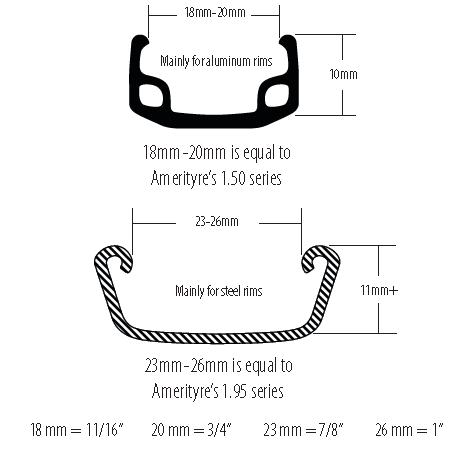When it comes to checking tire tread, there are a number of methods that can help you know if it’s time to replace a tire. Heavily worn tread will prevent a tire from performing as designed and can lead to unsafe driving conditions. One of the simplest, most common ways to check tread depth requires nothing more than a penny and a few moments of your time.
In the United States, tire tread depth is measured in 32nds of an inch. New tires typically come with 10/32” or 11/32” tread depths, and some truck, SUV and winter tires may have deeper tread depths than other models. The U.S. Department of Transportation recommends replacing tires when they reach 2/32”, and many states legally require tires to be replaced at this depth.
The idea of the penny test is to check whether you’ve hit the 2/32” threshold. Here’s how it works:
Place a penny between the tread ribs on your tire. A “rib” refers to the raised portion of tread that spans the circumference of your tire. Tire tread is composed of several ribs.
Turn the penny so that Lincoln’s head points down into the tread.
See if the top of his head disappears between the ribs. If it does, your tread is still above 2/32” , If you can see his entire head, it may be time to replace the tire because your tread is no longer deep enough.
When performing the penny tire test, remember not only to check each tire, but to check various places around each tire. Pay special attention to areas that look the most worn. Even if parts of your tread are deeper than 2/32”, you should still replace the tire when any areas fail the penny test.
Consistent wear around the whole tire is normal, but uneven tread wear could be a sign of improper inflation, wheel misalignment, or a variety of other things. If you see uneven tread wear, you should have a technician inspect your vehicle.
A simple way to check your tire tread depth is by using a tread depth gauge.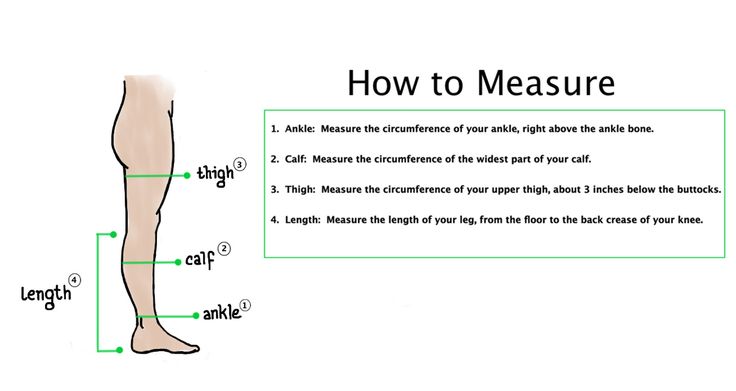 You can find tire tread depth gauges at your local auto parts store. There are many models available, but an inexpensive simple graduated probe gauge will work just fine. All you have to do is stick the probe into a groove in the tread and press the shoulders of the probe flat against the tread block and read the result. All gauges should measure in both 32nds of an inch and millimeters.
You can find tire tread depth gauges at your local auto parts store. There are many models available, but an inexpensive simple graduated probe gauge will work just fine. All you have to do is stick the probe into a groove in the tread and press the shoulders of the probe flat against the tread block and read the result. All gauges should measure in both 32nds of an inch and millimeters.
Another indicator of worn out tread already lives in your tires themselves. Every performance, light truck, or medium commercial tire comes equipped with indicator bars (or wear bars) embedded between the tread ribs at 2/32”. They’re there to help you monitor tread depth and make decisions about tire replacement. Just look to see if the tread is flush with the indicator bars. If they are, it’s time to replace the tire.
While the penny tire test does deliver on what it promises – indicating whether tread has reached the legal limit – it may not be the best indicator of whether your tires are safe for the road. Tire performance can diminish significantly before your tread hits 2/32”. Even though the law deems fit for safe driving may not prevent you from hydroplaning or losing control in rainy, slushy conditions. If you think your tires may be close to needing replacement, have them checked out by a licensed mechanic.
Tire performance can diminish significantly before your tread hits 2/32”. Even though the law deems fit for safe driving may not prevent you from hydroplaning or losing control in rainy, slushy conditions. If you think your tires may be close to needing replacement, have them checked out by a licensed mechanic.
Tire tread has the capacity to affect your vehicle’s safety and performance while on the go. While you might not think about your tire tread every time you drive, it is important to check in every once in a while to ensure that your tires are in good working order. Ready to talk about tire tread depth? Let’s dive in.
The tread depth of the tire is a vertical measurement between the top of the tread and the lowest groove. In the U.S., tire tread depth is measured in 32nds of an inch. When tires are brand new, they have tread depths from 10/32 to 11/32.
In the United States, tires are required by law to have easily recognizable tread wear indicators.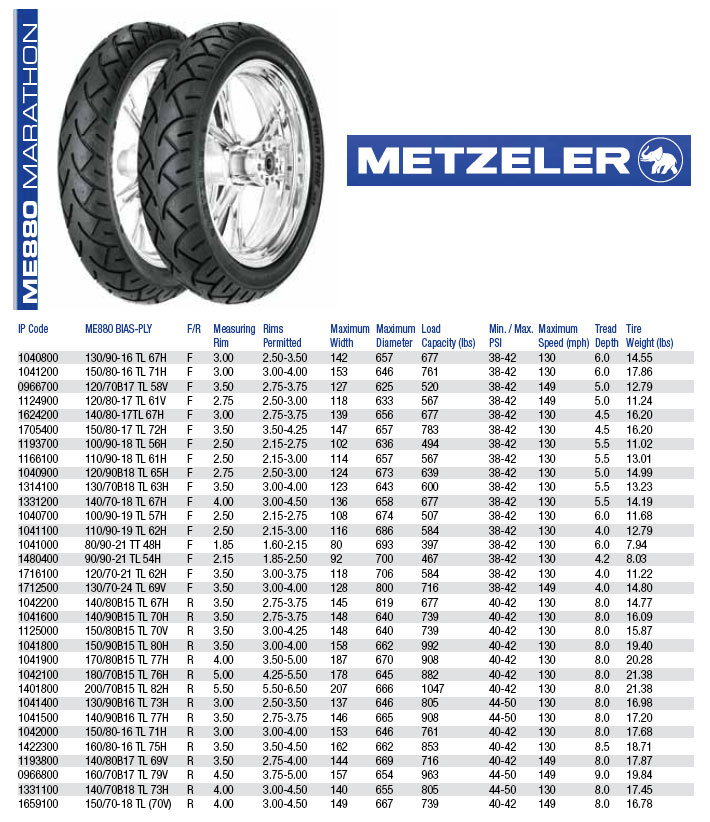 As the tire tread wears down, it eventually becomes level with the tread wear indicator. At this point, the tire should be replaced. It has too little tread left to provide traction. If safety weren’t persuasive enough, keep in mind that it is also illegal to drive with bald tires.
As the tire tread wears down, it eventually becomes level with the tread wear indicator. At this point, the tire should be replaced. It has too little tread left to provide traction. If safety weren’t persuasive enough, keep in mind that it is also illegal to drive with bald tires.
The minimum legal limit is 2/32 of an inch. This doesn’t mean that tires are perfectly safe if they have 3/32 left of tread. This is simply the limit at which you won’t pass your state safety inspection. Your tires become incrementally less safe as the tread wears down.
When it comes to safety, your tires are literally where the rubber meets the road. Sufficient tire tread depth is necessary for safe turning and braking.
Low tire tread depth can spell disaster for your drive, including:
If you live in an area where it rains or snows frequently, consider replacing tires when they reach 4/32 of an inch.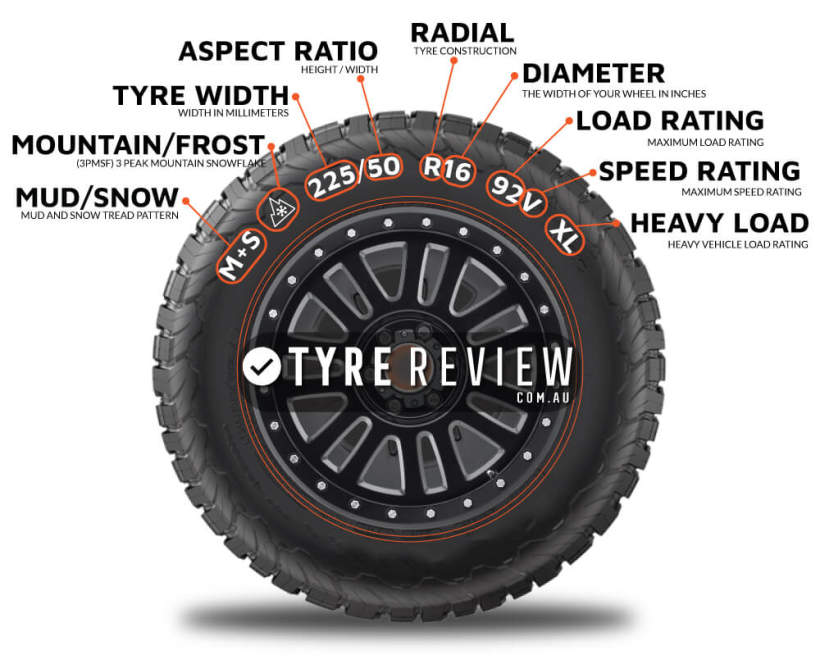 With worn tires, you are at risk of hydroplaning on wet roads. This is when the tire can’t channel the water through the grooves. The car rides along the top of the water instead of staying in contact with the asphalt. As such, the tires can’t respond to the steering system. If you have experienced it, you know how terrifying it can be. In icy or snowy conditions, low tread depth makes it harder to stop. You can also fishtail when accelerating or slide sideways when turning.
With worn tires, you are at risk of hydroplaning on wet roads. This is when the tire can’t channel the water through the grooves. The car rides along the top of the water instead of staying in contact with the asphalt. As such, the tires can’t respond to the steering system. If you have experienced it, you know how terrifying it can be. In icy or snowy conditions, low tread depth makes it harder to stop. You can also fishtail when accelerating or slide sideways when turning.
There are special considerations for driving in hot weather as well. If you are heading into summer and your tires are near the end of their lifespan, be aware that they wear down faster on hot roads.
Easy peasy. All you need to check your tire tread depth is a penny. Insert the penny with Abraham Lincoln’s head upside down. If the top of Abe’s head is showing, it’s time for new tires. Tamara shows you how to do it in this video.
Be thorough when you measure your tread depth. Insert the penny in several places around the tire. It’s not uncommon to have uneven tread wear. Measuring in several places will compensate for this.
Having the proper air pressure in your tires is also critical. Tire air pressure is expressed as a number followed by PSI. This stands for pounds per square inch. 28 PSI means 28 pounds per square inch. It is a measurement of the force inside the tire applied to one square inch. You can check the recommended tire pressure for your car in your owner’s manual or on a sticker inside the driver’s side door. For most vehicles, it is around 32 PSI.
If your pressure is too low, your tires will wear out quicker. You will also get poorer gas mileage. This is because it’s harder for your engine to propel a vehicle riding on squishy tires.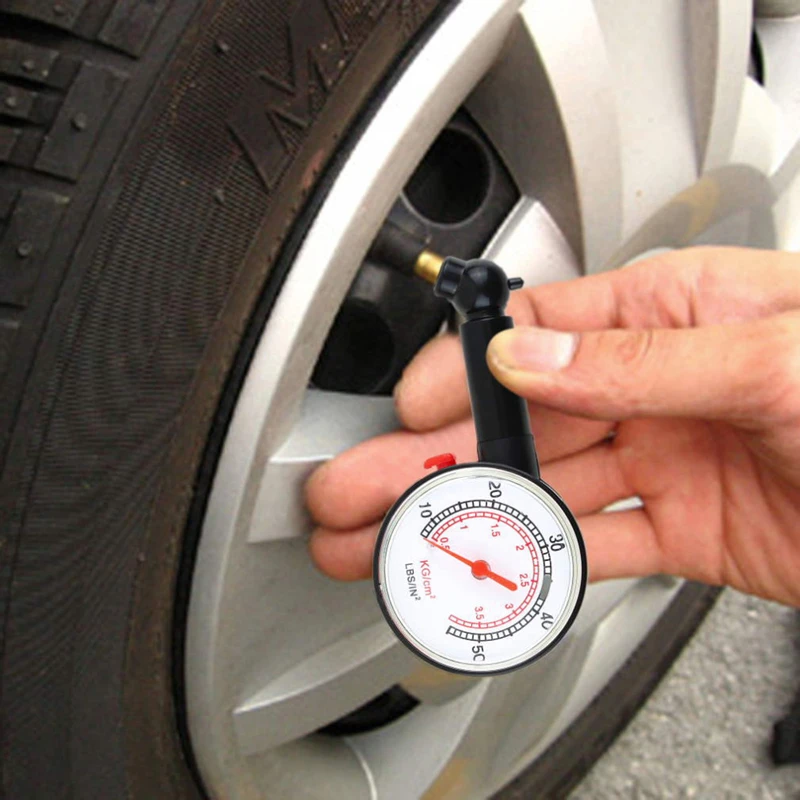 Low tire air pressure also results in a jerkier ride. Thankfully, there are plenty of easy ways to score a free tire pressure refill.
Low tire air pressure also results in a jerkier ride. Thankfully, there are plenty of easy ways to score a free tire pressure refill.
If you discover that your tires are too low, fill to the correct pressure. Don’t assume ‘more is better’. There are problems with overinflation as well. When a tire has too much air, it doesn’t have as much surface area in contact with the pavement. This makes it more difficult to handle. It also increases the risk of a blowout. At high speeds, a blowout can be deadly.
Since the early 1970s, the National Highway Traffic Safety Administration (NHTSA) and international counterparts were concerned about the dangers of low air pressure. They were seeking technology that could warn drivers. Evidence was mounting that underinflated tires were a factor in thousands of car accidents each year. At the end of the decade, the NHTSA was also motivated by the energy crisis.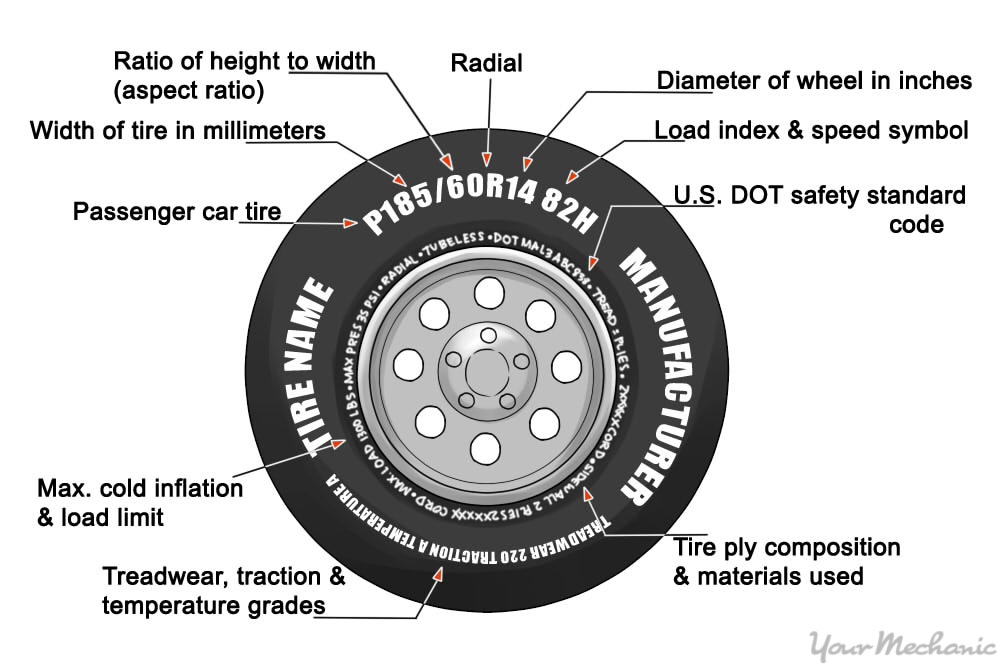 Tire air pressure affects fuel economy.
Tire air pressure affects fuel economy.
Tire pressure sensing technology became available in the 1980s and was first used by Porsche on the 1987 Porsche 959. In the U.S., TPMS was federally mandated beginning with the 2007 model year.
There are two types of TPMS, indirect and direct. Direct pressure detectors are located on the tire stems. If the sensor detects a significant drop in pressure, it sends an alert to the engine computer—resulting in a dashboard warning light. The indirect type uses the antilock brake system to detect low pressure by measuring wheel speed. Tires revolve at different speeds depending on air pressure. The indirect method is less reliable and has been largely phased out among manufacturers.
At Chapel Hill Tire, we have been providing professional automotive service to North Carolina drivers since 1953. We help our valued clients choose the right tire and protect their tire investment with alignment and wheel balancing services.
Do you need new tires in Cary, Apex, Carrboro, Chapel Hill, Raleigh, or Durham? Our experts can help you find the right tires for your vehicle at the lowest possible price. With our Price Beat Guarantee, you can ensure you are getting the best possible price on new tires in the Triangle. Schedule an appointment at one of our 10 Triangle-area service centers. We look forward to welcoming you to Chapel Hill Tire!
Back to Resources
Car tires - an elastic shell mounted on a disc rim. It is the tires that dampen the small vibrations that occur due to imperfect roads and compensate for the inconsistency in the trajectories of the wheels. The characteristics of tires affect: driving comfort, maneuverability and vehicle stability. However, even the highest quality rubber eventually deteriorates. Therefore, every driver should know how to correctly determine the degree of tire wear in order to replace them in time. Car and truck tires have different periods of use, depending on both the initial characteristics of the products and the operating conditions.
Car and truck tires have different periods of use, depending on both the initial characteristics of the products and the operating conditions.
Tires wear out not only due to operational loads. They are characterized by natural aging, since the rubber compound from which the tires are made gradually loses its elasticity and resilience. The use of such rubber leads to a deterioration in vehicle controllability and creates dangerous conditions due to the high probability of tire rupture on the way.
In accordance with GOSTs 4754-97 and 5513-97, the warranty period for car tires is 5 years. Foreign manufacturers claim that the service life of tires is 5-10 years. There are no legislative acts obliging drivers to change tires after this period, but in order to create safe driving conditions, the driver must take into account the recommendations of GOST. Manufacturers usually set their own warranty periods.
Michelin, Bridgestone, Nokian, Continental, Dunlop, Pirelli, Yokohama:
| Brand | Warranty period declared by the manufacturer |
| Bridgestone | Tire dependent - 3-6 years |
| Nokian
| 5 years |
| Continental | 10 years old |
| Dunlop | Tire dependent |
| Pirelli | Tire dependent |
| Yokohama | 5 years |
| Michelin | 10 years old |
During the warranty period, the responsibility for identified significant defects rests with the manufacturer. The owner of the vehicle will be forced to eliminate defects on his own if there have been:
The owner of the vehicle will be forced to eliminate defects on his own if there have been:
If the vehicle is used intensively, it may be necessary to replace the tires before the end of the warranty period.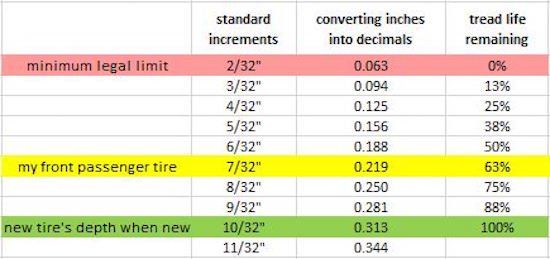 Therefore, regulatory documents establish the mileage after which you should think about replacing tires.
Therefore, regulatory documents establish the mileage after which you should think about replacing tires.
The maximum standard mileage is:
The actual rate of tire wear may differ from the standard values due to a whole list of factors, such as:
 Low-quality products under the influence of abrasive particles wear out very quickly.
Low-quality products under the influence of abrasive particles wear out very quickly. You can determine the need for tire replacement yourself by the following signs:
Table of minimum allowable tread depth for different modes of transport as amended on 01.01.2015
| Minimum allowable remaining tread depth | Type of transport |
| 0.8 mm | L - motorcycles, mopeds, quad bikes |
| 1. | N2, N3, O3, O4 - trucks with a maximum permissible mass of more than 3.5 tons and trailers with a maximum permissible mass of more than 3.5 tons |
| 1.6 mm | M1, N1, O1, O2 - cars, trucks and trailers with a maximum authorized mass of less than 3.5 tons |
| 2.0 mm | M2, M3 - buses |
| 4.0 mm | Winter tires marked M+S, M&S, M S, the residual tread depth does not depend on whether tires are installed on cars or trucks |
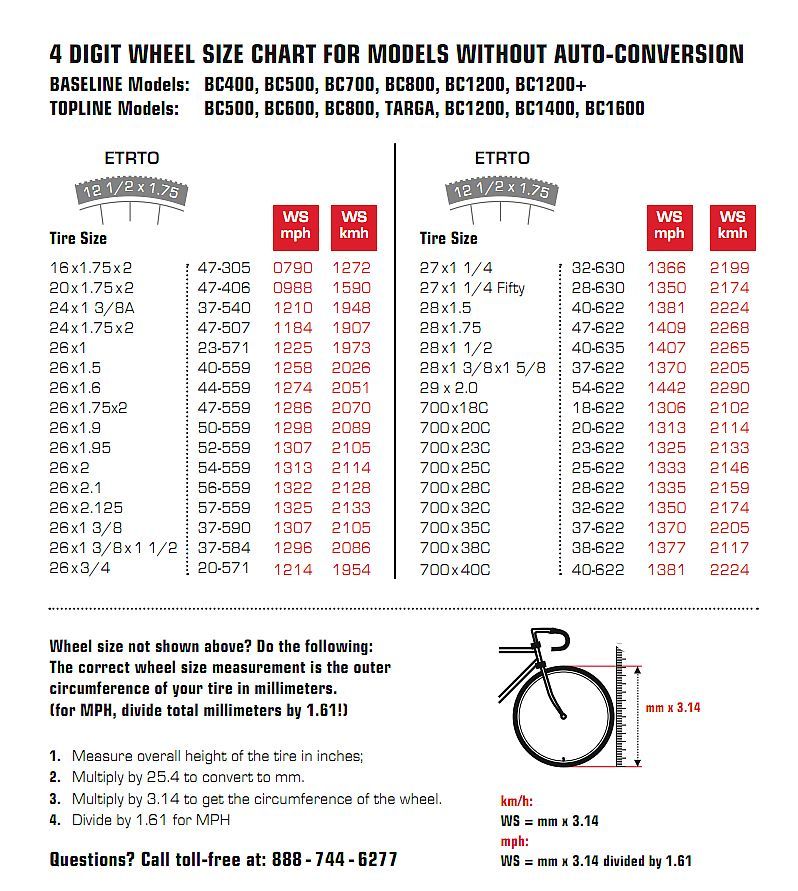 If it does not exceed 50% of the original value, then the tires must be replaced.
If it does not exceed 50% of the original value, then the tires must be replaced. Important! If the outer edges of the tire wear faster, the internal pressure is insufficient. Accelerated wear of the central part indicates excessive pressure. Wear on one side indicates a violation of the toe angle. Uneven surface wear is evidence of aggressive driving with rapid acceleration and hard braking.
You can extend the life of your tires by doing the following:
Normative document regulating the terms and conditions of tire storage - GOST 24779-81. However, it is believed that when standard storage conditions are created, after 5 years of storage, tires retain the characteristics corresponding to the properties of a new product. If this period is exceeded, product characteristics may decrease.
However, it is believed that when standard storage conditions are created, after 5 years of storage, tires retain the characteristics corresponding to the properties of a new product. If this period is exceeded, product characteristics may decrease.
Basic requirements for a room intended for storage of tires:
Previous article↑ ArticlesNext article
The service life of summer tires cannot be a single value, as it depends on many factors ...
By itself, the rubber compound can retain the necessary properties even for 10 years, but in most cases the tread wears out much faster, since it is designed for only 50-60 thousand km. The quality of roads, the presence of reagents and technical fluids on the surface, the driving style and even the number of sunny days - all this is generally reflected in the resource of tires.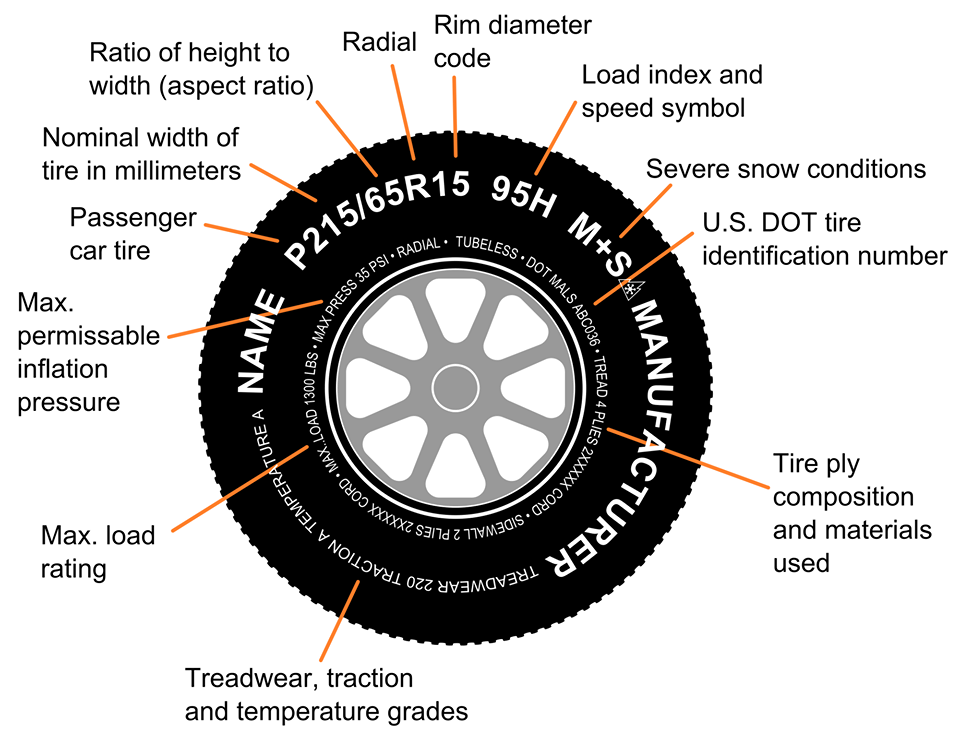 But how do you know when it's time to change your summer tires?
But how do you know when it's time to change your summer tires?
Fortunately, there are visual signs of car tire wear. They have been verified over the years and by millions of drivers:
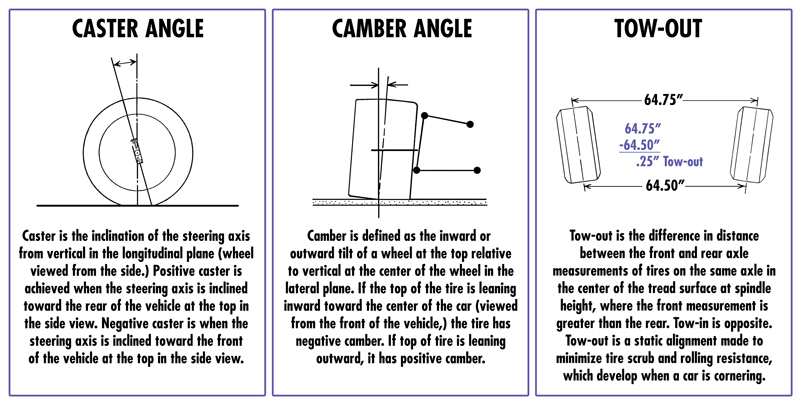 If the cracks are not deep, then a special tire moisturizer can help, but in case of cuts, only replacement will help.
If the cracks are not deep, then a special tire moisturizer can help, but in case of cuts, only replacement will help. By the way, there are many effective measures aimed at significantly extending the life of tires:
